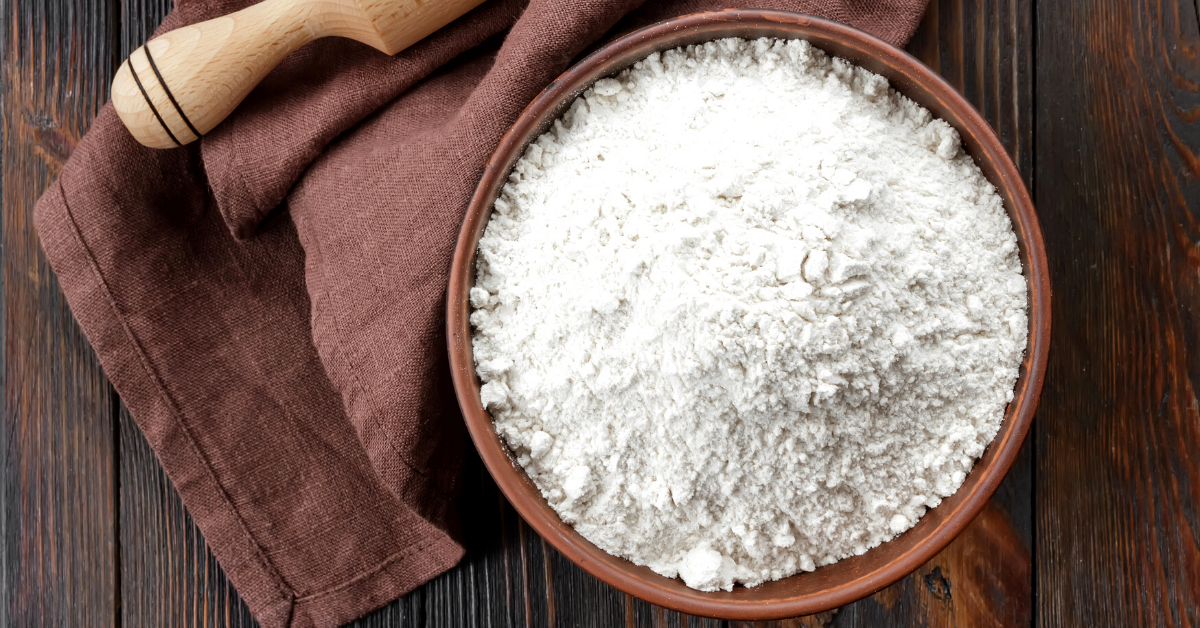
Diabetes Problem Foods: People with diabetes often hear opinions about what foods are okay to eat or not. But what’s the truth? Here is some perspective about white flour from Timika Chambers, CDCES.
Diabetes Problem Foods, Pt. 8
Sweets and breads can be rough foods for people diagnosed with diabetes (PWD). Mouthwatering cakes, pies, fresh breads and pastries seem to attack all of the body's senses.
The consumption of the common ingredients, flour and sugar, can send blood sugars into a frenzy with many recovery days. However, when we combine creativity, knowledge, and self-discipline, we can minimize our fears and blood sugar spikes and spend more time enjoying the foods we love.So for this installment of Diabetes Problem Foods, let's focus on white flower: that powdery substance you find on the grocery store shelf that makes up the bulk of cakes, breads, pastries, holiday recipes, and so on.
History of Flour
Research reveals that flour was first introduced around 30,000 years ago in Europe. The making of flour involves reducing seeds, grains, or roots, using rice, rye, or wheat to fine particles. Originally flour options were limited, consisting of all-purpose, self-rising, and wheat flour.
Initially, white flour was a staple food for the rich. As with many creations, the flour-making technique became more sophisticated, which increased the availability of flour to other social classes.
Today’s flours typically fall into two major categories:
-
How was it processed? In processing the flour, agents such as whitening agent may be used (bleached versus unbleached). The fibrous portion of the kernel may be kept or removed (wheat versus refined flour), or leavening agents may be used (plan versus self-rising flour).
-
Which grain or non-grain ingredient was used? The type of flour produced depends on the grain or non-grain used, such as almonds (12g of carbs), chickpeas (26 g of carbs), coconut (68g of carbs), wheat (60 g of carbs), and the like.
Nutritional Facts
One of the most common questions I hear is, why does white flour cause my blood sugar to rise so quickly? The answer comes down to fiber.
Unlike whole wheat flour, white flour is made by removing the bran and germ, the fibrous and nutritious portion of the kernel. Fiber-rich foods containing the whole kernel (bran and germ) are known to delay the body’s glucose absorption. Therefore, the more balanced your food is, the longer it takes to release the nutrients from food into your bloodstream. As you know, many people do not take in the necessary amount of fiber, which is known to help manage cholesterol and blood pressure, risks associated with heart disease and stroke.
Although white flour is a cholesterol-free and low-sodium food, its glycemic index is approximately 75, which is considered high.
One cup of white flour contains approximately 3.4 g of Dietary Fiber (within its 95 grams of carbohydrates), 13 grams of protein, 19 grams of Calcium, 134 mg of Potassium, and meets 32% of the recommended daily intake of Iron. When thinking about nutritional information in these terms, remember that nobody just eats a cup of flour. That cup is mixed with other ingredients and gets divided into servings, so the nutritional value becomes about serving size and portion control.
Additional Food for Thought on Flour
Key things to remember:
-
Each flour has its unique makeup, including taste. It is not always a 1 to 1 ratio when substituting.
-
The more fiber in the flour, the more the potential benefit of blood sugar management.
-
Unbleached flour goes through the aging process naturally. Bleached flour is chemically treated.
-
Refined flour is without the bran and germ. Enriched flour is the addition of nutrients, such as folic acid and Iron.
-
Organic flour is made from pesticide-free grain and without chemical treatment such as irradiation. Make sure the 100% Organic Label is on the package. The UPC is five numbers and starts with the number 9.
-
Raw flour contains bacteria and the risk of contracting E. coli, a type of bacteria can make you sick.
-
The key to enjoying the holidays is not to overindulge and stay active. Be creative by spreading the food you love over the day. Typically, a meal plan includes three meals and two small snacks. You can also make the most of your enjoyment by avoiding snacking on foods such as pies and cakes and plan to have them with your meals to help delay sugar absorption. Remember to check your blood sugars routinely to know what you are dealing with before eating your meals. Include physical activity throughout the day.
Flour in Recipes
While it is okay to mindfully enjoy foods that contain white flour, reducing this ingredient can help with blood sugar management. Here is a list of recipes to help you reduce or eliminate white flour in your diet.
Tip: You can also mix flours, add seeds such as chia and flax seeds, oatmeal, and other healthy ingredients to your recipes.
-
Almond flour: Low-carb Chocolate Mug Cake
-
Almond flour: Sugar-free Lemon Loaf
-
Reduced white flour (almond and grain combined): French Apple Tart
-
Reduced white flour (almond and grain combined): Pumpkin Chocolate Chip Cookies
-
Reduced white flour (almond and grain combined): Low-carb Pumpkin Pie
-
Almond and flax: Low-carb Pumpkin Bread
-
Reduced flour: Greek Yogurt Pancakes

